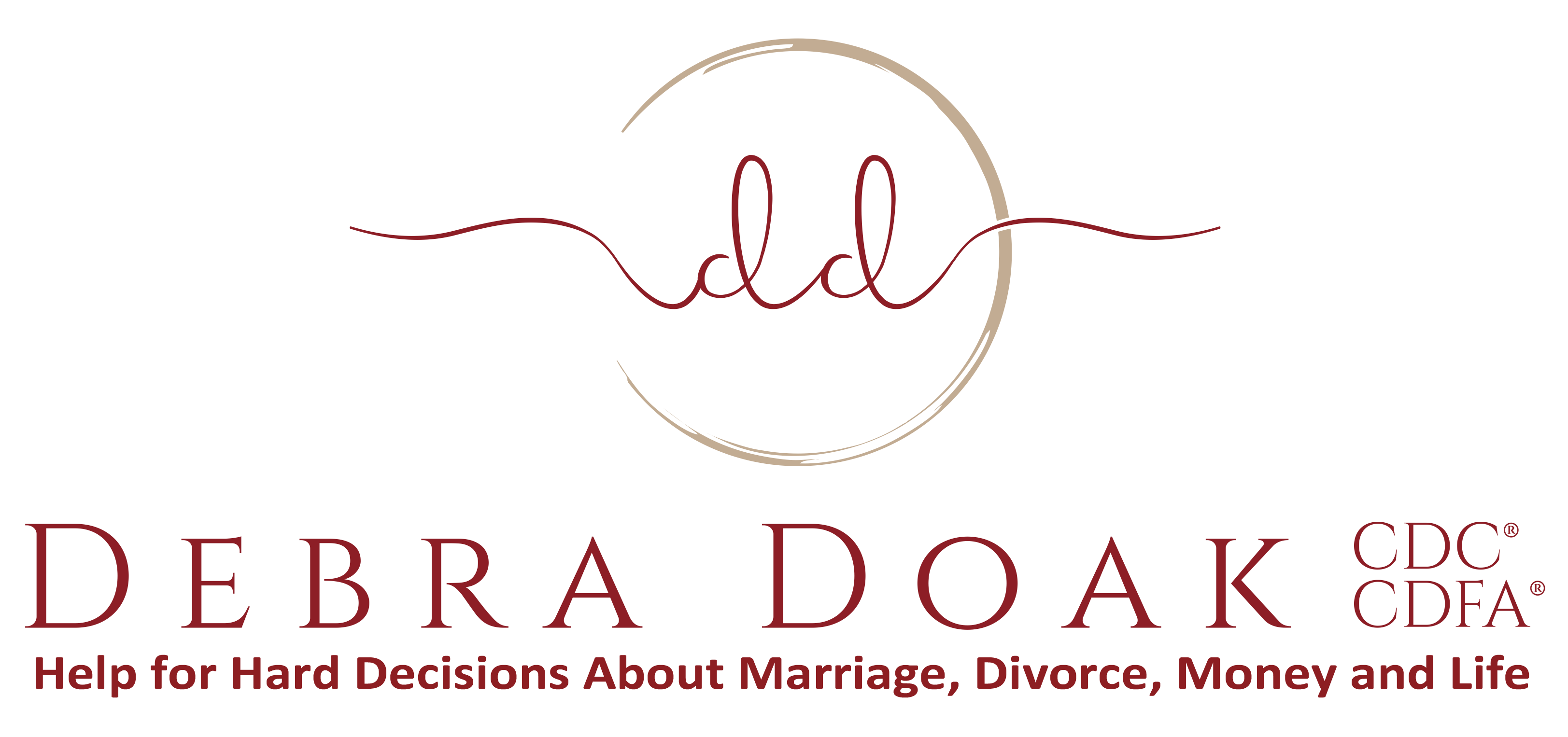
Budgets, Chocolate Donuts and Cute Shoes
I know. Just hearing the word “budget” can cause some people to break out in a rash. But if you’re facing divorce, knowing the reality of your income and expenses is not optional if you want to make good decisions.
Money is only a tool. It will take you wherever you wish, but it will not replace you as the driver. – Ayn Rand
What it is about the idea of managing our personal finances that feels so scary?
First of all, it sounds like a diet, right? Some kind of limitation of our freedom to do as we please. Ugh, now I can’t eat that chocolate donut or buy those cute new shoes.

The whole idea can feel so restrictive. And yet, a budget is really nothing more than a tool. A way to know that you’re on track to meet your goals.
Ah, there it is.
For many people, financial goals aren’t clearly defined. If you don’t know what you’re aiming for, you don’t have a filter to run decisions through and aren’t concerned about the longer term impact of your daily habits.
Never is this more important than when working through a divorce settlement and making choices about your new life.
If you want to make good decisions and be the boss of your own financial life, there is, unfortunately, some homework to be done. Get all the tools and encouragement you need with my Ditch Your Divorce Fears Financial Planner.
Step 1: Marital Lifestyle Analysis
Don’t tell me what you value, show me your budget, and I’ll tell you what you value.” – Joe Biden
If you haven’t been heavily involved in your family finances up until now, it’s time for a crash course. You will want to gather a year’s worth of checking and credit card statements and dig in.
Your objective is to estimate how much you actually spend each month (on average) on utilities, clothing, gasoline, travel, personal care, health, school tuition, child care, insurance, etc… I ask you to look at a year of activity in order to do these estimates so that you don’t miss out on any expenses that only come up once a year or once a quarter.
Your bank or credit card company may categorize transactions for you and allow you to download a report. Wohoo! Less work for you!
Grab a big cup of coffee and make yourself a chart like the one below. Create as many rows as you need to detail all your expenses. Then note the amount paid each month and calculate an average for the 12 months.
| Jan | Feb | … | Average | |
| Cell Phone | ||||
| Car Insurance | ||||
| Groceries | ||||
| Travel |
This will give you a good starting point. The information you gather will be useful for the next step, but can also be used as a basis for any spousal support (maintenance or alimony) claim you may make. Your previous marital lifestyle can be important.
Step 2: Post-Divorce Budget Scenarios
Phew! That was a huge step.
Now, those expenses were for the whole family, so it’s time to carve out just your portion.
The DYDF budget worksheet gives you space to separate your expenses from your children’s – this is in preparation for the legal documents you will be asked to submit. Each state’s financial disclosure forms are different, but you may be asked to list your living expenses without including the costs associated with your children.
It also gives you the opportunity to play around with different scenarios to see how it impacts your bottom line. At this point, you may not have exact numbers , especially for spousal support or child support, and that’s OK. That’s why the scenarios are helpful.
You may need to do a little legwork to answer some post-divorce budget questions like:
- If you keep the marital home, will you need to refinance the mortgage to pay your partner their share of the equity? How much will that increase the monthly payment?
- If you plan to move, how much will rent or your new mortgage payment be?
- Will you be going back to work or increasing your income? And how much will childcare cost if you need it?
- If you will be losing health insurance, how much will it cost to get your own plan?
- How much will it cost to you separate out your cell phone, car insurance, etc..?
Do the best and most thorough job you can. Take your time. Ask a friend (or me) for help if you need it.
Try not to get caught in the trap of wanting certainty right now. In the middle of divorce, that can paralyze you. Just create as many scenarios as you need to – knowing that the final will fall somewhere in there and you’ll be ready!
Step 3: Take Charge of Your Future
The best thing money can buy is financial freedom. – Rob Berger
I always say that the most expensive thing in divorce is fear. And the antidote to fear is knowledge.
You may not like the numbers you see on your post-divorce budget. But living in truth and light will bring you freedom. The freedom to make the right decisions for you. Now that you have a framework, you can evaluate settlement offers, job offers, housing choices and more with the knowledge of how it will impact your financial life.
You can also make informed spending decisions. Maybe you’re not willing to give up your visit to the salon for highlights, but you can stretch out those visits or give up a few lattes to free up the funds. Or you’ll need to work 30 hours week instead of 15 to support the lifestyle you want.
If you decide it’s your priority, you can still have donuts AND cute shoes. Good news, right?
The point is that you will be making INFORMED choices.
Want Some Help Harnessing Those Finances?
I believe that through knowledge and discipline, financial peace is possible for all of us. Dave Ramsey
We’ve got this. Even if numbers are new to you, I promise you can take control of your financial life during divorce and after.
Teamwork makes the dream work, right? And there’s no better time to bolster your team than when you’re creating your post-divorce life. Let’s get you set up for success. Schedule a complimentary consultation and let’s chat about how working with a personal coach can get you started on the right foot.
Wishing you strength and wisdom,




